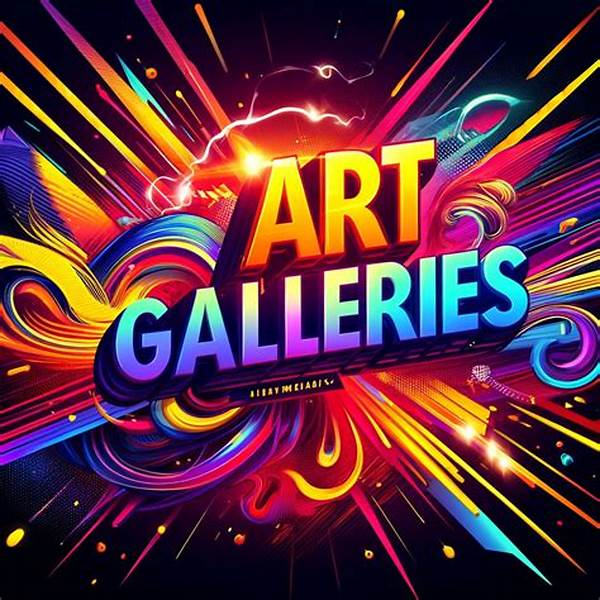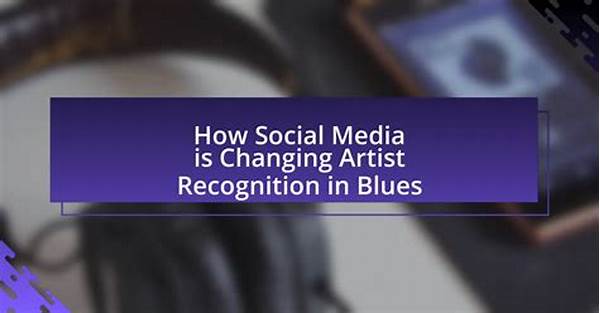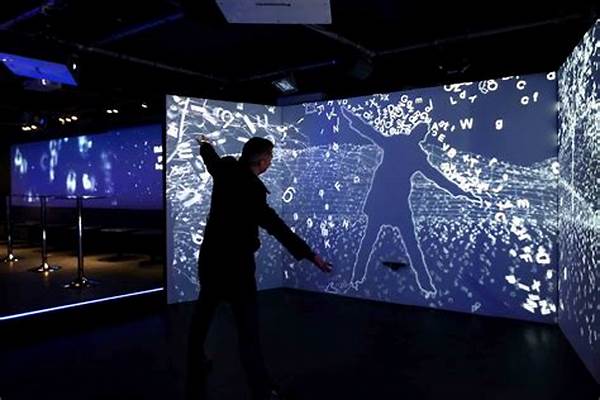Building relationships with art galleries is as much an art as creating the pieces that line their walls. Whether you’re an emerging artist or a collector with a growing portfolio, nurturing these relationships can open doors to enriching experiences and opportunities. While the art world may initially seem vast and intimidating, there are pathways to create meaningful and lasting connections with these cultural institutions. Through genuine interaction and mutual respect, you can create partnerships that enrich your artistic journey or collecting experience.
Read Now : Important Elements Of A Freelance Portfolio
The Importance of Networking in the Art World
Networking plays a crucial role in building relationships with art galleries. Art galleries serve not only as exhibitors but also as hubs for art enthusiasts, critics, and collectors. By attending gallery openings, art fairs, or industry events, individuals can meet gallery directors, artists, and fellow patrons. When you engage in these social events, remember to approach it authentically. Genuine interest in the works displayed can naturally lead to conversations with gallery staff and artists. Over time, these interactions can evolve into friendships, providing valuable insights into the art industry.
Establishing your presence in these circles is a gradual process. When building relationships with art galleries, it’s essential to understand the gallery’s ethos and curatorial preferences, which requires attention and persistence. Speak to gallery representatives and ask about their upcoming events or preferred art styles. Demonstrating your knowledge or passion for art can open doors to exclusive previews or studio visits, allowing for deeper connections with artists and gallery owners.
Networking also allows artists and collectors to stay current with industry trends. Emerging artists gain visibility and credibility through positive associations with respected galleries, while collectors can discover fresh talent and investment opportunities. Remember, though, that building relationships with art galleries is not just about personal gain—it’s about contributing to and participating in the vibrant art community.
Strategies for Artists
1. Attend Gallery Events: Regular attendance at gallery exhibitions and events is crucial for building relationships with art galleries. Your presence signals interest and commitment, creating space for organic conversations with key players in the art scene.
2. Follow Up on Meetings: After meeting gallery representatives, a polite follow-up email expressing appreciation can strengthen the budding relationship. This gesture shows your genuine interest in their exhibitions and fosters ongoing communication.
3. Offer to Collaborate: Expressing willingness to collaborate with the gallery on future projects or exhibitions can be instrumental in building relationships with art galleries. Collaboration showcases adaptability and highlights a willingness to contribute to the gallery’s vision.
4. Maintain Professionalism: While forming friendships is beneficial, maintaining professionalism is essential for building relationships with art galleries. Respect for their time and an understanding of their curation process helps build a positive reputation.
5. Leverage Social Media: Engage with galleries on social media platforms by liking, commenting, or sharing their content. This can help in building relationships with art galleries as your online interactions demonstrate support and increase visibility within the art community.
Engaging Collectors with Art Galleries
Engaging collectors in building relationships with art galleries involves a slightly different approach but is equally rewarding. Collectors often look for authenticity and a personal connection with the art they acquire. When visiting a gallery, collectors should be open to exploring diverse art styles, as this can lead to discovering unexpected treasures. The gallery scene provides collectors with a space to deepen their appreciation and understanding of art and its creators.
Participation in gallery-organized events such as artist talks and panel discussions is beneficial. These platforms present collectors with insights directly from artists about their work, inspiration, and processes, enhancing appreciation and understanding of potential investments. Building relationships with art galleries through these interactions allows collectors to gain insider knowledge of emerging trends and access to exclusive pieces that might not be available to the broader market. Collectors should nurture relationships respectfully, understanding the balance between personal preference and the gallery’s curatorial direction.
Persistent engagement and learning about the gallery’s community initiatives, education programs, or charitable activities also help collectors align their broader philanthropic goals. When collectors support galleries beyond purchasing art—such as through sponsorship or donations—they contribute to the art ecosystem’s sustainability. Therefore, their investment transcends personal gain, contributing to the cultural community and fostering collaboration that benefits all parties involved.
Tips for Building Long-Term Relationships
1. Be Genuine: Authenticity is the cornerstone of building relationships with art galleries. Whether you are an artist or collector, approach galleries with genuine interest and enthusiasm for their work and exhibitions.
2. Understand the Gallery’s Vision: Take time to research and understand a gallery’s mission and aesthetic. This understanding can guide your interactions and proposals, ensuring they align with the gallery’s identity.
3. Consistent Communication: Regular contact with gallery representatives keeps you informed and engaged with upcoming events. Simple gestures like season’s greetings can maintain an active line of communication.
4. Participate Actively: Engagement goes beyond attending events; it involves active participation in discussions, exhibitions, and gallery projects. This proactive approach demonstrates your commitment and interest.
Read Now : Budget-friendly Artistic Materials
5. Offer Mutual Support: Building relationships with art galleries is a two-way street. Offer your skills or resources to support the gallery, such as volunteering for events or promoting their exhibitions on social media.
6. Cultivate Patience: Establishing relationships takes time; patience and perseverance are essential. Relationships in the art world, like art itself, gradually develop and mature over time.
7. Seek Feedback: Open yourself to critiques and feedback, particularly as an artist. This willingness to learn and grow endears you to galleries invested in developing talent.
8. Celebrate Successes Together: Acknowledge and celebrate the gallery’s milestones and achievements. Shared celebrations reinforce bonds and demonstrate an investment in their success.
9. Share Artistic Journeys: Whether through blogs, social media, or newsletters, sharing your art journey invites galleries to partake in your growth and transitions within the art world.
10. Ethical Conduct: Uphold integrity and ethical practices throughout your interactions. Respect the gallery’s business processes and protect intellectual property rights.
For Emerging Artists
Emerging artists may find the art world daunting, but building relationships with art galleries can be a career-defining endeavor. It starts with understanding that these relationships are not merely transactional. While galleries provide platforms for exposure and sales, they are essentially about mutual growth and artistic synergy. New artists should take the time to research galleries aligning with their style and approach, ensuring a philosophical fit.
Visits to exhibitions and openings should include thoughtful analysis and sincere praise of the work on display. Getting to know gallery staff and established artists also lays the groundwork for meaningful professional connections. When artists open up about their creative processes and experiences, they foster familiarity and relatability. Building relationships with art galleries can thus become a collaborative effort where both parties contribute to and benefit from the dynamic landscape of contemporary art. Aspiring artists should also be prepared to adapt and evolve continually, drawing inspiration from the thriving, diverse art scenes they engage with.
For Art Collectors
Art collectors play a vital role in building relationships with art galleries by demonstrating a commitment to cultural enrichment and collaboration. These relationships are characterized by a shared appreciation for art’s transformative power. Collectors should not approach galleries solely as venues for procurement but as partners in cultural dialogue and artistic discovery.
Participating in collector evenings, workshops, or gallery-hosted events is an invaluable way to build a rapport with gallery owners and fellow art enthusiasts. Engaging positively in these environments sets the stage for enduring relationships where collectors can acquire art that transcends mere aesthetic enjoyment, telling stories and evoking emotional connections. Thus, building relationships with art galleries for collectors extends beyond enjoying art; it involves fostering a culture of collection that values narrative depth and artistic significance.
Conclusion
Building relationships with art galleries involves consistent engagement, genuine interest, and a willingness to contribute to the artistic community’s vitality. Starting with gallery events, artists and collectors can gradually form personal connections, enhancing both their professional and cultural experiences. Building relationships with art galleries allows emerging artists and seasoned collectors to engage with the art world meaningfully. As relationships mature, they unlock opportunities for collaboration, learning, and growth. This dynamic interaction broadens perspectives, deepens appreciation, and fosters a vibrant art ecosystem.
Whether you are showcasing your work or acquiring art, the relationships you build with galleries provide a platform for exploration and collaboration, enriching the entire art landscape. So approach each interaction with curiosity and creativity, and soon you’ll find these relationships opening new horizons in your artistic journey or collection pursuits.



